0 Volumes
No volumes are associated with this topic
Post-Revolution, Pre-Civil War
New topic 2019-04-30 01:13:17 description
Musical Fund Hall
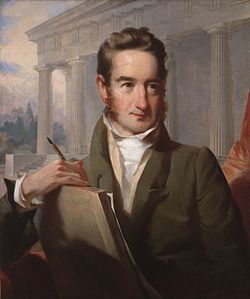
|
| William Strickland |
At the corner of 808 Locust stands a condominium building with a colorful history. It was originally the First Presbyterian Church, and then in 1820 the famous architect William Strickland converted it into the largest musical auditorium in the City. For several years, a group of music lovers had been meeting to discuss the problem of aging and retired musicians, most of them impoverished. The idea arose of giving several benefit performances each year to raise money for retired musicians, and the idea was enlarged to create a Musical Fund Society to put on regular concert series. Since it was by far the largest public auditorium, it also served for graduations, speeches, conventions.
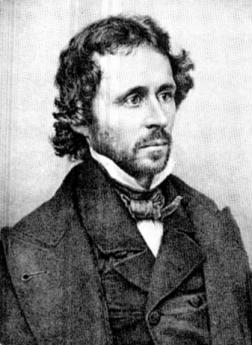
|
| John C. Fremont |
It thus came about that in 1856 the Republican Party held its first national convention there, nominating for President John C. Fremont, the famous explorer of the West. The Republicans had two main components, the advocates of the abolition of slavery, and the residual of the Whig Party, which had come apart. The Whigs were mainly concerned with using government effort to promote the economy, building canals and roads, and similar ideas for public benefit. Abraham Lincoln had been a fervent Whig.
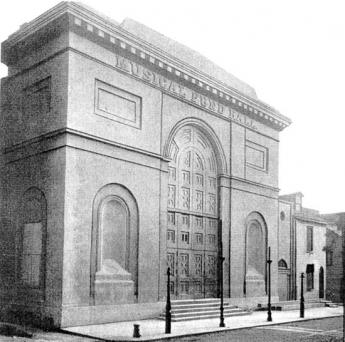
|
| Musical Fund Hall |
As a musical society, the Musical Fund was quite instrumental in persuading this Quaker City that music could be used for purposes other than religious incantations and frivolous entertainments. And it was useful in bringing the new instruments and musical concepts from Europe to the New World. Louis Madeira has written an interesting history of the early musical significance of the Musical Fund. When the Academy of Music opened in 1856, the old hall on Locust Street became a relic of the past. It had assets, however, and the organization continues to function as a granting agency for musical production and development in the Philadelphia area, even though it is itself no longer in the business of musical production.
And then the third strain of history in this old place is the development of Musical Unions. This is natural enough, in view of the original purpose of helping indigent musicians. But unfortunately, several competing unions appeared, most of them on Locust Street and the dissention was bitter and continuing. In 1871 Philadelphia was the scene of the creation of the National Musical Association, and although the local 77 became a part of the national movement, it was stormy. Competitive musical unions had a history of calling the police to shut down speakeasies run as private clubs by their competitors. During the Depression of the 1930's there were many accusations of Communist infiltration, and counter accusations that Joseph Petrillo, the national president, was a Nazi. An underlying theme among musicians was that foreign immigrants were willing to work for less than the standard wage, and hence many of the coercive features of the union were aimed at forcing immigrant musicians to become members and to refuse to work for substandard pay.
Some idea of the bitterness in the situation can be gained from the strike against the Philadelphia Orchestra in 1956. Ten years later, only one member of the union in ten was employed.
REFERENCES
| Music in Philadelphia: and the Musical Fund Society, Louis C. Madeira ISBN: 1-932109-44-7 | Ross and Perry Inc. |
| Musical Notes of a Physican: F. William Sunderman Sr. ISBN 0963292706 | Alibris |
Fanny Kemble
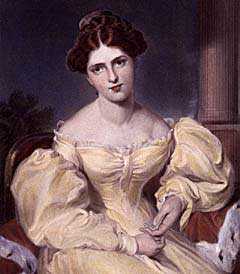
|
| Fanny Kemble (Sully) |
Frances Anne Kemble, universally known as Fanny, was just about the most magnificent Philadelphia woman of the Nineteenth Century. She spent much of her time abroad and others claimed her, but she was ours. Coming from a famous English theater family, the niece of Mrs. Siddons and the daughter of the founder of Covent Gardens, she quickly rescued the failing family fortunes by becoming the most striking Shakespearean ingenue of the time. It took very little time for her to know Lord Byron, Thackeray, and various other luminaries of the literary and artistic world of Europe, along with Queen Victoria. One might as well say she knew everybody unless one made the point that everyone knew her.
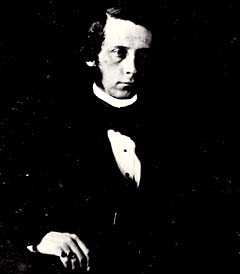
|
| Pierce Butler |
On a theatrical grand tour of America she met and married the Philadelphian Pierce Butler, one of the richest bachelors in the nation, heir to huge estates in Georgia. She had plenty of other choices, including the most dashing and romantic devil of the century, Trelawny. That glamorous friend of Byron's had been the one to drag Percy Shelley's body from the ocean, and was surely the greatest heartthrob of the century. Toward the end of her life, Fanny demonstrated the range of her appeal by totally subjugating the intellectual novelist Henry James, who was 34 years younger than she was. Her portraits by Sully now hang in the Pennsylvania Academy of the Fine Arts and in the Rosenbach Museum. Although Sully was said to have glamorized her a bit, her movie star qualities are evident. But appearance alone could not have mesmerized Henry James, known in literary circles as The Master. She was evidently one of those powerfully self-assured personalities encountered from time to time, who dominates every conversation, fills every room she enters, inspiring admiration rather than jealousy. As a youth, she was enchanting, as a mature woman, magnificent. Henry James described her as having "an incomparable abundance of being."
But this was not just another Cleopatra. Fanny Kemble had two personal achievements of enduring note. Because of health limitations, she went beyond being a Shakespearean actress to inventing a style of a public reading of Shakespeare, taking all the parts herself. She and Dr. Samuel Johnson were the two successive forces transforming Shakespeare's reputation from the quaint playwright of the past into the permanent towering figure of the English language.
Her other achievement destroyed her private life. As the wife of the owner of a thousand slaves, she led the attack on slavery before the Civil War. During the War, her passionate defense of emancipation was the main factor in persuading the British Government to refuse badly needed loans to the Confederacy. However, the publication of her journals was the last straw in a tumultuous marriage, and Pierce Butler divorced her, taking custody of their daughters, exiling her to England. Southern plantation owners were always short of cash, and realistically one has to acknowledge the strain of demanding to emancipate a thousand slaves, each one worth a thousand dollars. In one of the supreme ironies of a tragic situation, the forced sale of the slaves compelled the Butlers to liquidate an asset just before it was going to be destroyed by wartime events. Butler died in 1863, but she had done him a financial favor.
Fanny's daughter married Dr. Caspar Wistar, of Grumblethorpe and the grounds of present LaSalle College. Her grandson was Owen Wister, the college roommate of Teddy Roosevelt, later the author of The Virginian. Famous for the phrase "If you say that to me, smile", Owen Wister and his roommate created the fable of the romantic cowboy which still dominates movies and fiction, and, from time to time, the Presidency of the United States.
2 Blogs
Musical Fund Hall

Fanny Kemble
 Frances Anne Kemble had it all: fame, beauty, wealth, personal friendship with real royalty and literary royalty. Beyond that, she caused a major new understanding of Shakespeare and was a major force in the abolition of slavery. Philadelphia wasn't big enough to hold her; perhaps no town was.
Frances Anne Kemble had it all: fame, beauty, wealth, personal friendship with real royalty and literary royalty. Beyond that, she caused a major new understanding of Shakespeare and was a major force in the abolition of slavery. Philadelphia wasn't big enough to hold her; perhaps no town was.